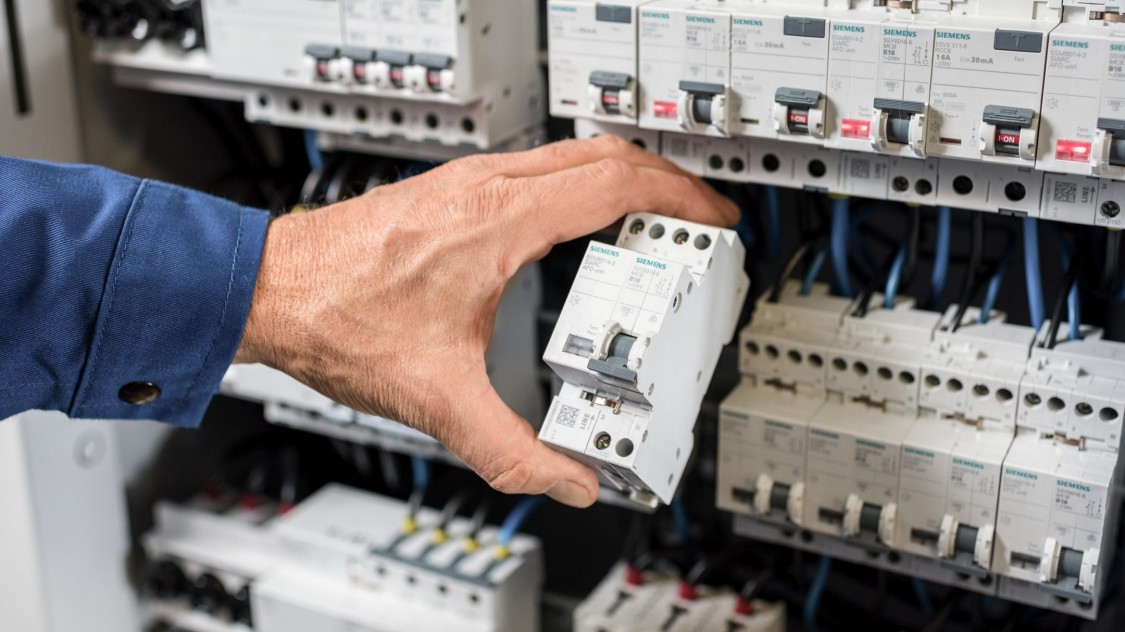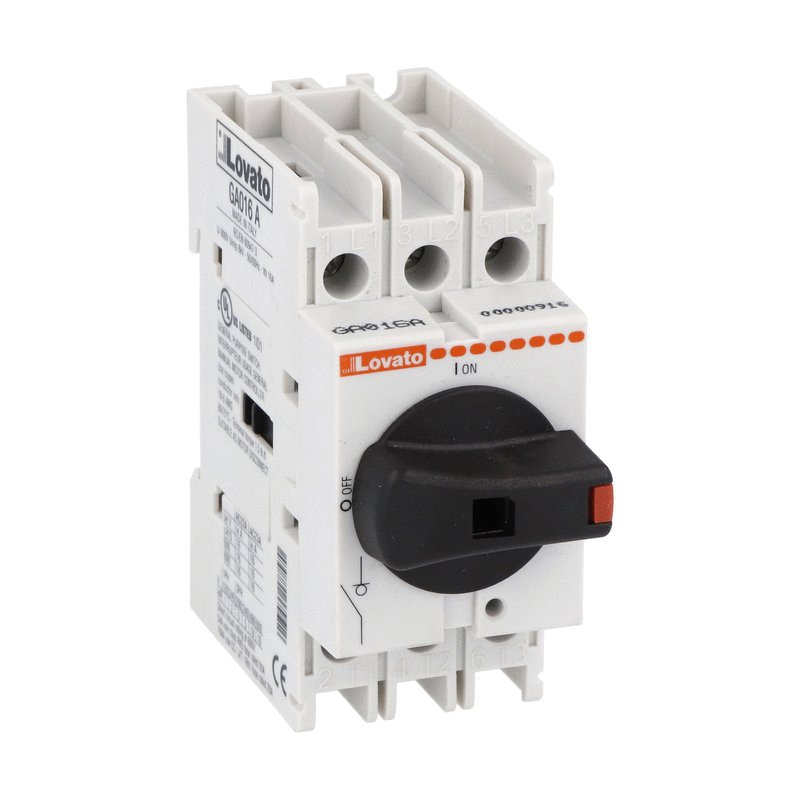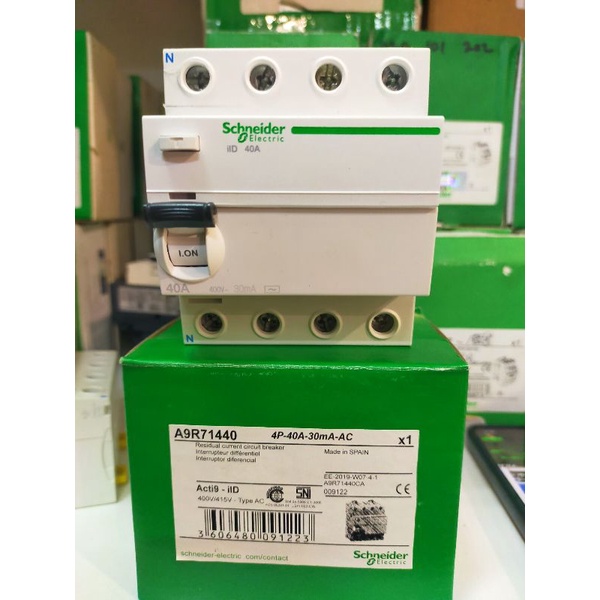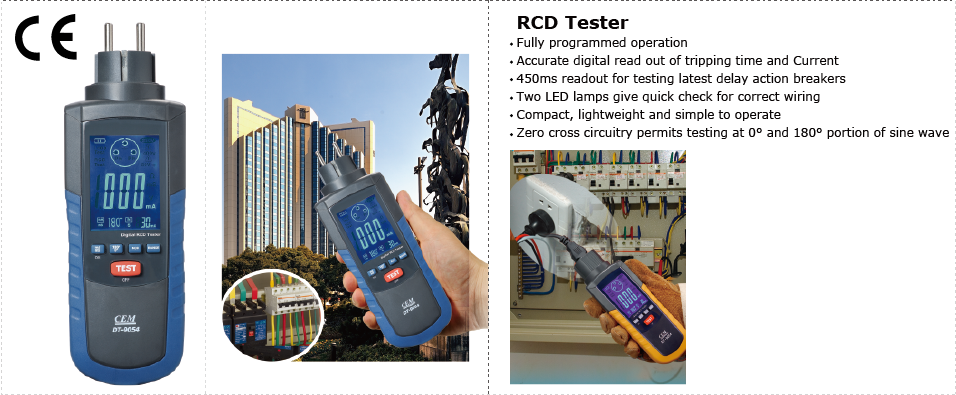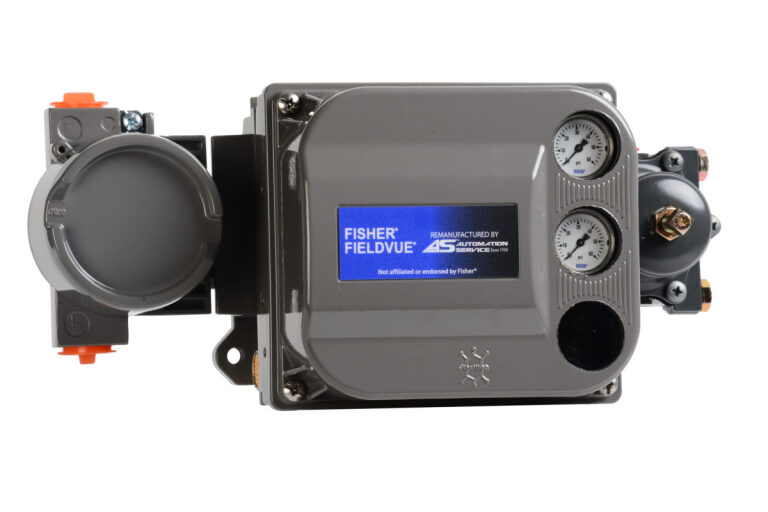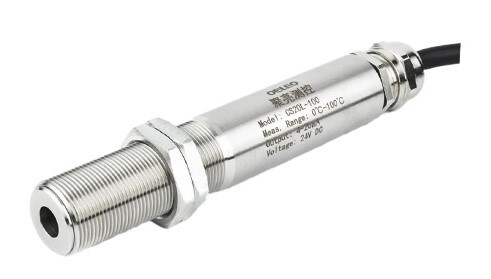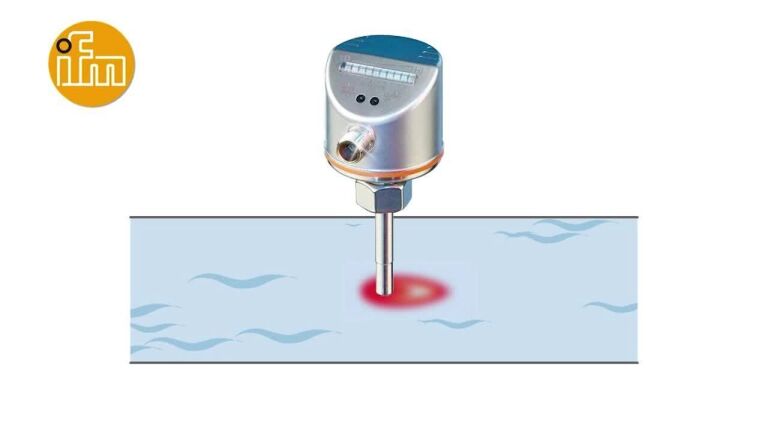بررسی نقش کلید محافظ جان
در ساختمانهای مسکونی و اداری
The Role of Residual Current Devices in Residential and Commercial Buildings
*تمام حقوق این مقاله برای سازه گستر پایتخت محفوظ است
کلمات کلیدی
کلید محافظ جان، RCD، ایمنی الکتریکی، ساختمانهای مسکونی، ساختمانهای اداری، حفاظت در برابر جریان نشتی، مقررات ملی ساختمان، استانداردهای بینالمللی، برندهای معتبر، تجهیزات الکتریکی
مقدمه
کلید محافظ جان (Residual Current Device یا RCD) از جمله تجهیزات بسیار حیاتی در سیستمهای الکتریکی است که به منظور حفظ ایمنی و جلوگیری از حوادث ناشی از برقگرفتگی و آتشسوزی طراحی شده است. با توجه به افزایش استفاده از تجهیزات الکتریکی در ساختمانهای مسکونی و اداری، خطرات ناشی از نشتی جریان و اتصالات کوتاه نیز افزایش یافته است. این کلیدها به عنوان یک خط دفاعی در برابر این خطرات عمل میکنند و به طور خودکار در صورت تشخیص هرگونه نشتی، مدار را قطع میکنند.
شما می توانید برای خرید و اطلاع از قیمت کلید محافظ جان ساختمانهای مسکونی و اداری مورد نیاز خود از طریق مشاوره با کارشناسان سازه گستر پایتخت اقدام نمایید.
گروه سازه گستر پایتخت با تکیه بر بیش از 20 سال تجربه و فعالیت به عنوان تامین کننده تجهیزات و ملزومات صنعت برق کشور ( الکتریکال - مکانیکال - ابزار دقیق ) با افتخار آماده خدمت رسانی به فعالان صنعت برق و صاحبان صنایع می باشد.
شماره تماس : 32 20 17 66 - 021
پست الکترونیک: info@sazehgostarsgp.com
نشانی: تهران، میدان فردوسی، کوچه گلپرور، پلاک 20، واحد 25
تاریخچه توسعه کلیدهای محافظ جان به دهه 1960 برمیگردد، زمانی که نیاز به تجهیزات حفاظتی در برابر برقگرفتگی و آتشسوزی در اثر نشت جریان احساس شد. این کلیدها به سرعت به یکی از الزامات اصلی در طراحی سیستمهای الکتریکی تبدیل شدند. در سالهای اخیر، با پیشرفت فناوری و افزایش استانداردهای ایمنی، کارایی و دقت این تجهیزات نیز بهبود یافته است.
در این مقاله، به بررسی نقش کلید محافظ جان در ساختمانهای مسکونی و اداری، الزامات قانونی، نحوه عملکرد، انواع کلیدهای محافظ جان، مزایا و معایب آن، و همچنین برندهای معتبر در این حوزه پرداخته خواهد شد. همچنین، به تاثیرات کلیدهای محافظ جان بر ایمنی عمومی و کاهش حوادث ناشی از برقگرفتگی خواهیم پرداخت.
الزامات قانونی
استفاده از کلید محافظ جان در ساختمانهای مسکونی و اداری بهطور رسمی در قوانین و مقررات ملی ساختمان ایران قید شده است. بر اساس مبحث 13 مقررات ملی ساختمان، استفاده از این کلیدها برای تمامی ساختمانها الزامی است (وزارت راه و شهرسازی، 1399). همچنین، در شیوهنامه شرکت توانیر، استفاده از کلیدهای حفاظت در برابر جریان نشتی برای کلیه ساختمانها تأکید شده است. این قوانین به منظور تضمین ایمنی ساکنان و کاهش خطرات ناشی از برقگرفتگی و آتشسوزی وضع شدهاند.
سوئیچ جداکننده Lovato مدل GA016A لواتو
نحوه عملکرد کلید محافظ جان
کلید محافظ جان با مقایسه جریان ورودی و خروجی مدار، هرگونه اختلاف بین این دو را به عنوان نشتی جریان تشخیص میدهد. در صورت وجود نشتی، کلید به سرعت مدار را قطع میکند. این عملکرد بهویژه در محیطهای مرطوب و خطرناک مانند حمام و سرویس بهداشتی اهمیت دارد زیرا در این مکانها احتمال برقگرفتگی بیشتر است.
نحوه عملکرد
فرض کنید یک دستگاه برقی در حمام دچار نشتی شود. در این حالت، جریان نشتی به زمین منتقل میشود و کلید محافظ جان با تشخیص این اختلاف، به سرعت مدار را قطع میکند و از برقگرفتگی افراد جلوگیری مینماید. این ویژگی به ویژه در ساختمانهای مسکونی که شامل خانوادههای با کودکان و سالمندان هستند، اهمیت دارد.
انواع کلیدهای محافظ جان
کلیدهای محافظ جان به طور کلی به چند دسته تقسیم میشوند که هر کدام ویژگیها و کاربردهای خاص خود را دارند. در ادامه به توضیحات فنی و زیرمجموعههای هر نوع پرداخته میشود.
کلیدهای محافظ جان نوع A
ویژگیها:
- این نوع کلیدها برای تشخیص جریانهای نشتی نوع AC طراحی شدهاند.
- قادر به تشخیص نشتیهای جریان متناوب هستند.
کاربرد:
- معمولاً در کاربردهای عمومی مانند ساختمانهای مسکونی و اداری استفاده میشوند.
مثال:
- استفاده از کلید محافظ جان نوع A در آشپزخانه برای جلوگیری از برقگرفتگی ناشی از تماس آب با وسایل برقی.
کلید محافظ جان (RCCB) چهار پل ۸۰ آمپر اشنایدر مدل A9R11480
کلیدهای محافظ جان نوع B
ویژگیها:
- علاوه بر جریانهای AC، قادر به تشخیص جریانهای نشتی نوع DC نیز هستند.
- این کلیدها معمولاً حساستر از نوع A هستند و برای سیستمهای خاص طراحی شدهاند.
کاربرد:
- به ویژه در سیستمهای فتوولتائیک و تجهیزات صنعتی که از جریان مستقیم استفاده میکنند، کاربرد دارند.
مثال:
- کلید محافظ جان نوع B در سیستمهای انرژی خورشیدی برای جلوگیری از برقگرفتگی ناشی از نشت جریان در پنلهای خورشیدی.
کلیدهای محافظ جان نوع F
ویژگیها:
- این نوع به طور خاص برای سیستمهای سهفاز و تجهیزات صنعتی طراحی شدهاند.
- میتوانند نشتیهای جریان را در سیستمهای سهفاز تشخیص دهند.
کاربرد:
- معمولاً در محیطهای صنعتی و کارگاهها استفاده میشوند.
مثال:
- استفاده از کلید محافظ جان نوع F در کارگاههای تولیدی که از ماشینآلات سنگین استفاده میکنند.
کلیدهای محافظ جان نوع S
ویژگیها:
- این نوع کلیدها دارای ویژگی قطع خودکار هستند و در صورت تشخیص نشتی، به صورت خودکار به حالت کار نمیروند تا از بروز خطرات بیشتر جلوگیری کنند.
کاربرد:
- در مکانهایی که نیاز به حفاظت مداوم از تجهیزات حساس وجود دارد، مانند مراکز داده و اتاقهای سرور.
مثال:
- استفاده از کلید محافظ جان نوع S در مراکز داده برای حفاظت از سرورهای حساس در برابر نشت برق.
RCD تستر نشت جریان مدل CEM-DT-9054
استانداردهای بینالمللی
استفاده از کلیدهای محافظ جان باید مطابق با استانداردهای بینالمللی باشد. چندین استاندارد مهم در این زمینه وجود دارد:
1. IEC 61008-1: این استاندارد مربوط به کلیدهای محافظ جان با عملکرد خودکار (RCD) است و الزامات کلی برای طراحی، عملکرد و آزمایش این تجهیزات را تعیین میکند.
2. IEC 62423: این استاندارد مختص کلیدهای محافظ جان نوع B است و مشخصات فنی و الزامات عملکردی برای این نوع کلیدها را ارائه میدهد.
3. BS 7671: استاندارد بریتانیایی که به الزامات الکتریکی و ایمنی در تأسیسات الکتریکی میپردازد و شامل موارد مربوط به استفاده از RCDها نیز میباشد.
مزایا و معایب کلید محافظ جان
مزایا
1. حفاظت از جان افراد: کلید محافظ جان با قطع سریع برق در صورت وجود نشتی، از برقگرفتگی جلوگیری میکند.
2. کاهش خطر آتشسوزی: با جلوگیری از نشتی جریان، این کلیدها میتوانند از بروز آتشسوزی ناشی از اتصالات کوتاه جلوگیری کنند.
3. افزایش عمر تجهیزات: با کاهش خطرات ناشی از نشتی، عمر تجهیزات الکتریکی افزایش مییابد.
4. کاهش هزینههای بیمه: استفاده از کلیدهای محافظ جان میتواند به کاهش هزینههای بیمه ساختمانها کمک کند، زیرا این تجهیزات به عنوان یک اقدام حفاظتی محسوب میشوند.
معایب
1. عدم حفاظت در برابر اضافه بار: کلید محافظ جان نمیتواند در برابر اضافه بار و اتصال کوتاه محافظت کند و برای این منظور باید از کلیدهای مینیاتوری نیز استفاده شود.
2. حساسیت به جریان نشتی: اگر کلید محافظ جان با حساسیت نامناسب انتخاب شود، ممکن است در شرایط عادی قطع شود و این میتواند مشکلاتی را ایجاد کند.
3. نیاز به نگهداری و تست دورهای: برای اطمینان از کارایی صحیح کلیدهای محافظ جان، نیاز به نگهداری و تست دورهای دارند.
کاربرد کلید محافظ جان در تاسیسات مختلف
ساختمانهای مسکونی
در ساختمانهای مسکونی، کلید محافظ جان در نقاطی مانند حمام، آشپزخانه و مناطق مرطوب نصب میشود تا ایمنی ساکنان تأمین شود. این کلیدها به ویژه برای خانوادههای دارای کودکان یا افراد سالخورده اهمیت دارد. در این مکانها، احتمال تماس ناخواسته با آب و تجهیزات برقی بیشتر است و کلید محافظ جان میتواند به سرعت مدار را قطع کند.
ساختمانهای اداری
در ساختمانهای اداری، کلیدهای محافظ جان به عنوان بخشی از سیستمهای حفاظتی در اتاقهای سرور و مراکز داده استفاده میشوند. این کلیدها از بروز خطرات ناشی از نشتی و اتصالات کوتاه در تجهیزات حساس جلوگیری میکنند. با توجه به حجم بالای اطلاعات و اهمیت نگهداری دادهها، ایمنی این تجهیزات بسیار حیاتی است.
صنایع
در صنایع، به ویژه در کارگاهها و کارخانهها، کلیدهای محافظ جان در تجهیزات برقی و ماشینآلات سنگین به کار میروند. این کلیدها به حفظ ایمنی کارگران و جلوگیری از حوادث ناشی از نشت برق کمک میکنند. در محیطهای صنعتی، خطرات ناشی از نشت و اتصالات کوتاه بسیار افزایش مییابد و استفاده از کلیدهای محافظ جان میتواند از بروز حوادث جدی جلوگیری کند.
محیطهای مرطوب
در مکانهایی مانند استخرها، سوناها و سالنهای ورزشی، استفاده از کلیدهای محافظ جان برای جلوگیری از خطرات ناشی از رطوبت و تجهیزات برقی الزامی است. این تجهیزات به دلیل شرایط مرطوب، در معرض خطرات بیشتری هستند و کلیدهای محافظ جان میتوانند از بروز حوادث ناگوار جلوگیری کنند.
مراکز درمانی
در مراکز درمانی و بیمارستانها، استفاده از کلیدهای محافظ جان از اهمیت ویژهای برخوردار است. این کلیدها به حفاظت از تجهیزات پزشکی کمک میکنند و از برقگرفتگی بیماران و کادر پزشکی جلوگیری مینمایند. تجهیزات پزشکی معمولاً در محیطهای حساس و با ریسک بالا قرار دارند و ایمنی آنها بسیار حائز اهمیت است.
محیطهای آموزشی
در محیطهای آموزشی مانند مدارس و دانشگاهها، نصب کلیدهای محافظ جان به ایمنی دانشآموزان و کارکنان کمک میکند. با توجه به استفاده روزمره از تجهیزات الکتریکی توسط دانشآموزان، نصب این کلیدها میتواند از بروز حوادث جلوگیری کند.
نتیجهگیری
کلید محافظ جان نقش حیاتی در تأمین ایمنی در ساختمانهای مسکونی و اداری دارد. با توجه به الزامات قانونی و مزایای این کلیدها، استفاده از آنها در طراحی و نصب سیستمهای الکتریکی ضروری است. با این حال، باید به معایب و محدودیتهای آن نیز توجه شود و در کنار آن از تجهیزات حفاظتی دیگر استفاده گردد.
بهویژه در محیطهای حساس و پرخطر، این کلیدها میتوانند بهعنوان یک ابزار مؤثر در کاهش حوادث و حفظ جان افراد عمل کنند.
The Role of Residual Current Devices in Residential and Commercial Buildings
Keywords
Residual Current Device, RCD, electrical safety, residential buildings, commercial buildings, leakage current protection, national building regulations, international standards, reputable brands, electrical equipment
Introduction
The Residual Current Device (RCD) is a crucial piece of electrical equipment designed to ensure safety and prevent accidents caused by electric shock and fire. With the increasing use of electrical devices in residential and commercial buildings, the risks associated with leakage currents and short circuits have also risen. These devices act as a defensive line against these dangers by automatically disconnecting the circuit if any leakage is detected
The history of RCD development dates back to the 1960s when the need for protective equipment against electric shocks and fires due to leakage currents was recognized. These devices quickly became one of the essential requirements in electrical system design. In recent years, advancements in technology and increased safety standards have further improved the efficiency and accuracy of these devices
This article will examine the role of RCDs in residential and commercial buildings, legal requirements, how they work, types of RCDs, their advantages and disadvantages, and reputable brands in this field. We will also discuss the impact of RCDs on public safety and the reduction of electric shock incidents
Legal Requirements
The use of RCDs in residential and commercial buildings is officially stated in the national building regulations of Iran. According to Section 13 of the national building regulations, the use of these devices is mandatory for all buildings (Ministry of Roads and Urban Development, 2020). Additionally, in the guidelines of the Tavanir Company, the use of leakage current protection devices for all buildings is emphasized. These regulations aim to ensure the safety of residents and reduce the risks of electric shock and fire.
How RCDs Work
An RCD operates by comparing the incoming and outgoing current in a circuit, detecting any difference between the two as a leakage current. If any leakage is present, the device quickly disconnects the circuit. This function is particularly important in wet and hazardous environments such as bathrooms and restrooms, where the risk of electric shock is higher
Example: How It Works
Suppose an electrical device in a bathroom develops a leak. In this case, the leakage current is directed to the ground, and the RCD detects this difference, quickly disconnecting the circuit and preventing electric shock to individuals. This feature is especially important in residential buildings that include families with children and the elderly.
Types of RCDs
RCDs can generally be categorized into several types, each with its specific features and applications. Below are technical descriptions and subcategories of each type.
Type A RCDs
Features
- Designed to detect AC leakage currents
- Capable of detecting alternating current leaks
Applications
- Typically used in general applications such as residential and commercial buildings
Example
- Using a Type A RCD in a kitchen to prevent electric shock from water contact with electrical devices
Type B RCDs
Features
- In addition to AC currents, capable of detecting DC leakage currents
- Generally more sensitive than Type A and designed for specific systems
Applications
- Particularly used in photovoltaic systems and industrial equipment that operate on direct current
Example
- Using a Type B RCD in solar energy systems to prevent electric shock from leakage currents in solar panels
Type F RCDs
Features
- Specifically designed for three-phase systems and industrial equipment
- Can detect leakage currents in three-phase systems
Applications
- Commonly used in industrial environments and workshops
Example
- Using a Type F RCD in manufacturing workshops that utilize heavy machinery
Type S RCDs
Features
- These RCDs have an automatic disconnection feature and do not reset automatically after detecting a leakage, preventing further risks
Applications
- In places that require continuous protection of sensitive equipment, such as data centers and server rooms
Example
- Using a Type S RCD in data centers to protect sensitive servers from electrical leakage
International Standards
The use of RCDs must comply with international standards. Several important standards in this area include
1. IEC 61008-1: This standard relates to RCDs with automatic operation and defines general requirements for the design, performance, and testing of this equipment.
2. IEC 62423: This standard is specific to Type B RCDs and provides technical specifications and performance requirements for this type of device
3. BS 7671: A British standard that addresses electrical safety and requirements in electrical installations, including the use of RCDs
Advantages and Disadvantages of RCDs
Advantages
1. Protection of Lives: RCDs prevent electric shock by quickly disconnecting the circuit when leakage is detected
2. Reduction of Fire Risks: By preventing leakage currents, these devices can help avoid fires caused by short circuits
3. Increased Equipment Lifespan: By reducing risks associated with leaks, the lifespan of electrical equipment increases
4. Lower Insurance Costs: The use of RCDs can reduce insurance costs for buildings, as these devices are considered a protective measure
Disadvantages
1. Lack of Overload Protection: RCDs do not protect against overloads and short circuits, and miniature circuit breakers (MCBs) should also be used for this purpose
2. Sensitivity to Leakage Current: If an RCD is selected with inappropriate sensitivity, it may trip under normal conditions, causing issues
3. Need for Regular Maintenance and Testing: To ensure the proper functioning of RCDs, regular maintenance and testing are necessary
Applications of RCDs in Various Installations
Residential Buildings
In residential settings, RCDs are installed in areas such as bathrooms, kitchens, and wet zones to ensure the safety of residents. These devices are particularly important for families with children or elderly members. In these locations, the likelihood of accidental contact with water and electrical devices is higher, and RCDs can quickly disconnect the circuit
Commercial Buildings
In commercial settings, RCDs are part of the protective systems in server rooms and data centers. These devices prevent risks associated with leakage and short circuits in sensitive equipment. Given the high volume of data and the importance of data preservation, the safety of this equipment is critical
Industrial Applications
In industries, particularly in workshops and factories, RCDs are used in electrical equipment and heavy machinery. These devices help maintain worker safety and prevent accidents caused by electrical leaks. In industrial environments, the risks associated with leakage and short circuits are significantly higher, and the use of RCDs can prevent serious accidents
Wet Environments
In places like swimming pools, saunas, and sports halls, the use of RCDs is mandatory to prevent hazards associated with moisture and electrical equipment. Due to the wet conditions, these devices are at greater risk, and RCDs can help prevent unfortunate incidents
Healthcare Facilities
In healthcare facilities and hospitals, the use of RCDs is of utmost importance. These devices help protect medical equipment and prevent electric shock to patients and medical staff. Medical equipment is usually located in sensitive and high-risk environments, making safety paramount
Educational Settings
In educational environments such as schools and universities, the installation of RCDs contributes to the safety of students and staff. Given the daily use of electrical equipment by students, installing these devices can help prevent accidents
Conclusion
RCDs play a vital role in ensuring safety in residential and commercial buildings. Given the legal requirements and advantages of these devices, their use in the design and installation of electrical systems is essential. However, attention must also be paid to their disadvantages and limitations, and complementary protective equipment should be used alongside them. Particularly in sensitive and high-risk environments, these devices can be an effective tool in reducing accidents and protecting lives
References
1. Ministry of Roads and Urban Development. (2020). *National Building Regulations, Section 13: Fire Safety*
2. Tavanir Company. (2021). *Guidelines for the Use of Residual Current Devices*
3. Hosseini, M. (2022). *The Role of Residual Current Devices in Building Safety*. *Iranian Journal of Electrical Engineering*
4. Ahmadi, S. (2021). *Performance of Residual Current Devices in Wet Environments*. *Journal of Safety and Health*
5. Rezai, A. (2020). *Protecting Lives with Residual Current Devices*. *Journal of Electricity and Energy*
6. Kazemi, R. (2022). *Reducing Fire Risks with Residual Current Devices*. *Journal of Safety and Crisis Management*
7. Niko, F. (2021). *Increasing the Lifespan of Electrical Equipment with Residual Current Devices*. *Journal of Electrical Engineering*
8. Salimi, J. (2020). *Limitations of Residual Current Devices and the Need for Other Equipment*. *Journal of Electrical and Electronic Engineering*
9. Yousofi, M. (2022). *Sensitivity of Residual Current Devices and Its Impact on Performance*. *Journal of Safety and Health*
10. Zarei, H. (2021). *Performance Analysis of Residual Current Devices in Residential and Commercial Buildings*. *Journal of Electrical Engineering*


